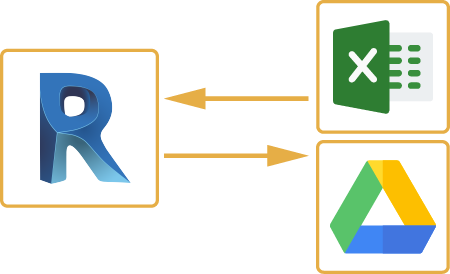Effectiveness Meets Accuracy: Explore Essential Revit Tools
Wiki Article
Mastering the Art of Data Assimilation: How to Seamlessly Import Excel Data Into Revit
In this article, we will lead you through the process of mastering the art of data combination. Get prepared to prepare your Excel information easily and follow our detailed overview to import data into Revit. With our finest methods, you'll attain information integration success in no time.Comprehending the Significance of Data Combination in Revit
Recognizing the relevance of data assimilation in Revit is critical for smooth importing of Excel files. When you integrate data from Excel into Revit, it permits you to effectively handle and update information throughout the entire task. This combination makes sure that your style and building process is current and precise.By integrating information, you can conveniently import and upgrade parameters, timetables, and also geometry in Revit. This eliminates the demand for hand-operated information entrance, saving you time and lowering the danger of mistakes. With Revit's data integration capacities, you can preserve consistency and precision in your project, while also enhancing partnership amongst group members.

Exploring the Excel Data Style for Revit Combination

In order to successfully integrate Excel documents into Revit, it is essential to make sure that the data is formatted correctly. This includes effectively identifying columns and rows, along with structuring the information in such a way that is suitable with Revit's data schema. Revit utilizes specific criteria and categories to arrange data, so it is essential to straighten the Excel data with these criteria to guarantee a seamless assimilation.
Additionally, it is very important to keep in mind that Revit only sustains particular data kinds when importing from Excel. These include message, numbers, and dates. Any other data kinds, such as formulas or conditional format, will not be recognized by Revit and might trigger concerns during the integration procedure.
Preparing Your Excel Information for Seamless Import Into Revit
To make sure a smooth combination procedure, you'll require to effectively format and tag the columns and rows in your Excel information before importing it right into Revit. Start by examining your Excel data and determining which rows and columns contain appropriate information for your Revit job.Next, make sure that the information in each column is appropriately formatted. If you have a column for dimensions, make certain that all dimensions are consistently formatted in the same devices of dimension. Revit relies upon constant formatting to have a peek at this website accurately interpret and import data.
Furthermore, it is essential to check for any kind of vacant cells or incongruities in your information. Revit may not be able to review or import information from cells that are empty or include errors. For that reason, it is recommended to review your Excel information and tidy up any type of disparities prior to importing it into Revit.
Step-By-Step Overview to Importing Excel Info Into Revit
When you've effectively formatted and classified your Excel information, you can conveniently import it into Revit by following this detailed guide. To start, open Revit and navigate to the "Insert" tab. revit tools.Following, a dialog box will certainly appear, enabling you to personalize the import setups. Right here, you can pick the worksheet you want to import, define the range of cells to import, and choose the appropriate Full Report devices for your data. When you've made your choices, click "OK" to proceed.
Revit will currently present a preview of your Excel data. Take a minute to make sure and assess the preview that whatever looks proper. If needed, you can make modifications to the import setups by clicking the "Settings" button.
Ideal Practices for Data Combination Success in Revit
See to it you adhere to these best techniques to make certain effective integration of data in Revit. It is important to arrange your information in Excel prior to importing it into Revit. This suggests making sure regular naming conventions, proper format, and accurate data depiction. Next off, use Revit's built-in tools for information mapping. This will certainly permit you to match the columns in your Excel data with the corresponding parameters in Revit. Be mindful of the devices and data kinds when mapping the data, as any type of discrepancies can lead to errors in the assimilation procedure.One more crucial technique is to regularly confirm and upgrade your data. As your job progresses, it is important to keep your Excel data as much as date with any type of adjustments made in Revit. This will certainly help maintain the precision and consistency of your data across both systems. Furthermore, take advantage of information recognition tools within Revit to recognize any type of mistakes or incongruities in the integrated data.
Last but not least, it is recommended to develop a clear operations for data assimilation. This includes specifying responsibilities and functions, setting up a communication network between staff member, and establishing a regular tempo for information updates and evaluations. By adhering to these best methods, you can ensure a seamless and effective assimilation of information in Revit, eventually enhancing the performance and precision of your project.
Final Thought
In final thought, grasping the art of data combination is vital for smooth import of Excel submits right into Revit. Recognizing the relevance of information assimilation in Revit is the initial action in the direction of effective combination.When importing data from Excel into Revit, it is important to understand the file layout and just how it can influence the integration process (import excel into revit). Revit utilizes certain parameters and groups to organize information, so it is crucial read more to line up the Excel data with these specifications to guarantee a smooth assimilation
Be mindful of the data and units kinds when mapping the data, as any disparities can lead to mistakes in the combination procedure.
In addition, make use of data recognition tools within Revit to identify any kind of errors or disparities in the incorporated data.

Report this wiki page